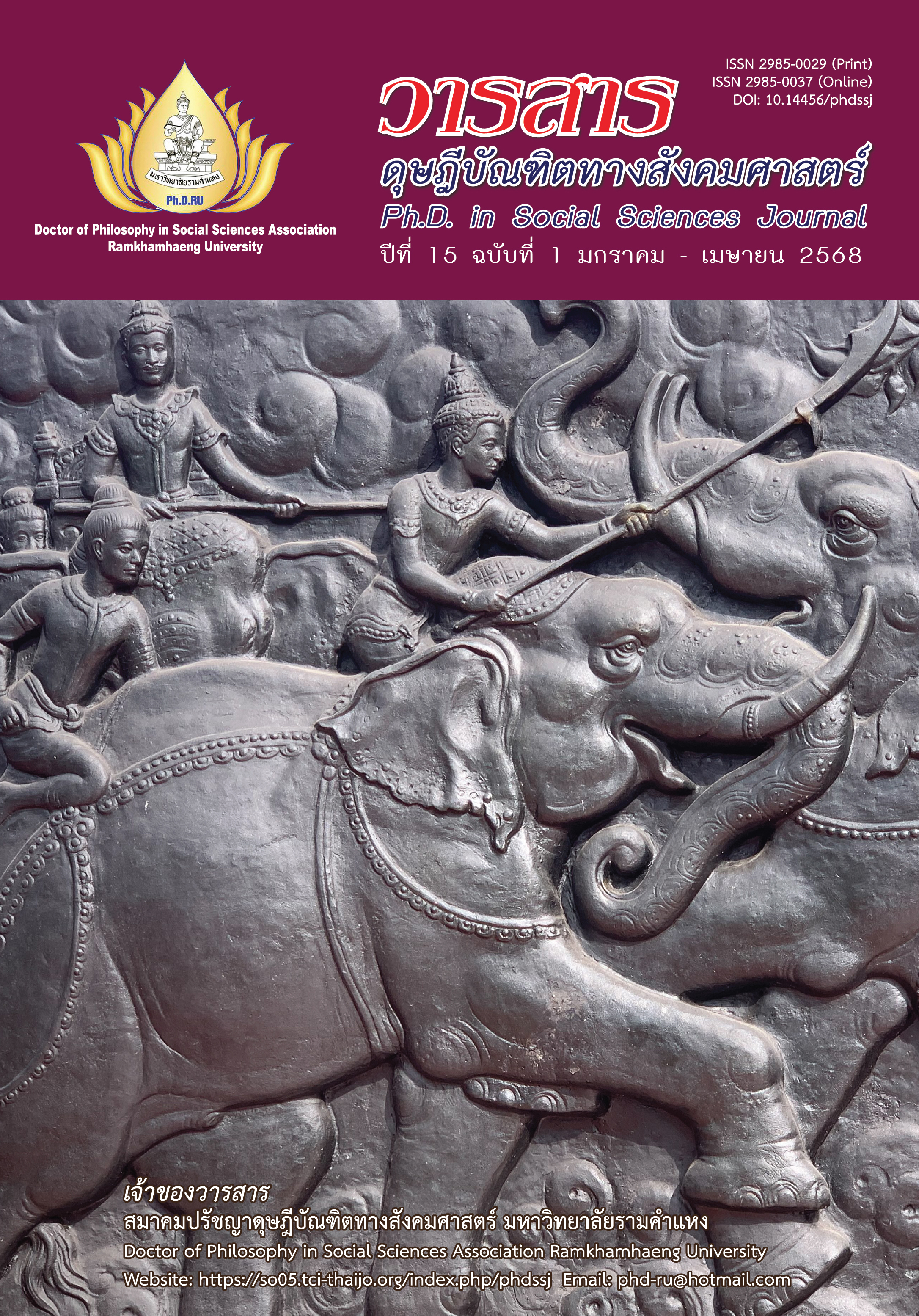The Protection of the Rights of Victims in Sexual Offense Cases
Main Article Content
Abstract
This research article aims to (1) study the approaches to protect the rights of victims in sexual offense cases from the impacts of legal proceedings affecting such victims, (2) study whether the approaches to protect the rights of victims in sexual offense cases do not affect the accused or defendant’s ability to defend their cases, and (3) study the relationship between types of justice officials, their perspectives on legal proceedings affecting sexual offense victims, and approaches to protect victims’ rights in sexual offense cases from The legal proceedings. This research employs both quantitative and qualitative methods. The Data were collected through questionnaires from 394 justice officials and interviews with 11 key informants who are experts in the justice system. The quantitative data were analyzed using Analysis of Variance (ANOVA), Multivariate Analysis of Variance (MANOVA), and Multivariate Analysis of Covariance (MANCOVA), while qualitative data were analyzed through content analysis.
Findings are as follows: The approaches to protect the rights of sexual offense victims from the impacts of legal proceedings help prevent victims from experiencing excessive psychological impacts during the legal process. This study recommends incorporating these protective approaches into the Criminal Procedure Code. These protective measures would cover all sexual offense victims, including female victims, male victims with feminine psychology, child victims, and male victims.
Article Details

This work is licensed under a Creative Commons Attribution-NonCommercial-NoDerivatives 4.0 International License.
Academic articles, research articles, and book reviews in the Ph.D. in Social Sciences Journal are author’s opinions, and not the publisher’s, and is not the responsibility of the Ph.D. in Social Sciences Journal Philosophy Association, Ramkhamhaeng University. (In the case that research is done on human, the researcher has to be trained in Ethics for Doing Research on Human Training and has to produce the evidence of the training).
References
Constitution of the Kingdom of Thailand B.E. 2550. (2007). Royal Thai Government Gazette, 124(47 A), 1-127. [In Thai]
Itsaranuwat, W. (2021). Development of a non-formal education program for enhancing the ability of family and trust worthy person to empower the sexual assault survivors. Doctoral Dissertation (Non-Formal Education), Chulalongkorn University. [In Thai]
Jaturongkakul, B. (2010). Unfair treatment in rape cases: A case study on unprotected women from Convention on the Elimination of All Forms of Discrimination Against Women 1979. Master’s Thesis of Laws (International Law), Thammasat University. [In Thai]
Khongwan, S., & Kliangkaew, W. (2019). Guidelines for protecting of the rights to prisoners with sexual harassment in prisons. Rangsit Journal of Law and Society, 1(1), 63-79. [In Thai]
Klakhang, B. (2004). Fact finding from raped women: Comparative study. Master’s Thesis of Laws, Thammasat University. [In Thai]
Panpanich, P. (1992). Attitude of criminal justice officers towards the criminal proceeding for rape offence. Master’s Thesis of Social Work, Thammasat University. [In Thai]
Soonthornpasuch, P. (2014). A Reasonable woman standard as the criterion for judging sexual offense trials in a case of stalking after the termination of a relationship. The Golden Teak: Humanity and Social Science Journal, 20(2.4), 99-107. [In Thai]
The Office of the High Commissioner for Human Rights. (n.d.). Declaration of Basic Principles of Justice for Victims of Crime and Abuse of Power 1985. Retrieved from https://www.ohchr.org/sites/default/files/victims.pdf
Vorawee, J., & Khongwan, S. (2020). Child sexual harassment law enforcement policy. Rangsit Journal of Law and Society, 2(1), 17-33. [In Thai]
Wattanasin, K. (2020). Study of challenges in discharging duties by female police commissioned officer. Journal of Social Science and Buddhistic Anthropology, 5(7), 197-210. [In Thai]
Yamane, T. (1973). Statistics: An introductory analysis (3rd ed.). Harper & Row.


